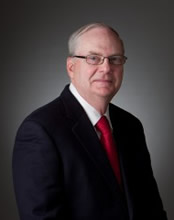As traffic engineers we take care to plan, design, and operate our roads for all users. When we are working in a complex urban environment, we must consider pedestrians, wheelchairs, vision impaired, bicycles, buses, and trucks. When we add automated, connected, and self-driving vehicles to the mix the complexity becomes more complex. That is why the profession is challenging and interesting.
The Institute of Transportation Engineers workshop on connected and automated vehicles at the 2015 Annual meeting gave us a chance to explore some of these complexities. One of our realizations was that it will take some time before all the vehicles are self-driving. Meanwhile, in the complex urban environment, we must operate a system that has vehicles with a range of capabilities. A talk by Chris Urmson, director of Google's self-driving car project, at a South by Southwest conference in Austin, Texas, March 11 reinforces the notion that driving in urban centers is the hardest type of driving.
"For many people, this isn't a kind of idle curiosity. There's people with health conditions who are blind and can't drive. Epilepsy, cerebral palsy: all things that limit their ability to get around in the world today...
How quickly can we get this into those people's hands? And if you read the papers, you're going to see that it's maybe three years, maybe 30 years. And I guess I'm here to tell you that I think honestly, it's a bit of both.........
So when we let human drivers loose on the road, normally we have this kind of graduated system where we either self-impose or our parents impose. The same is going to be true with self-driving cars. If you look at the way we develop vehicles, we started really driving on the freeways. And we started here because it's the easiest situation to drive in, because all the traffic's going in the same direction. It's all moving about the same speed. The road doesn't really change shape quickly.
And then to move to driving on boulevards.... We have to add in cross-traffic and traffic lights, but it's comparatively easy. And then we moved into residential streets. And here these look easy, but the stakes are high here because we live there. And people are close to the road, and it matters.
And then we finally moved into driving in urban centers. And here, everything is so compact, cars are coming from every which way, there's all kinds of traffic with pedestrians and mixed interactions going on. And this is the kind of the hardest type of driving...
So we when think about the technology rolling out over time, we imagine we're going to find places where the weather is good, where the roads are easy to drive, and the technology might come there first. And then once we have confidence with that, we'll move to more and more challenging locations."
Automated and connected vehicles provide the opportunity for safer driving There is greater "situational awareness because your vehicle can "see" nearby vehicles and know roadway conditions you cannot see. Crashes can be reduced or eliminated through driver advisories, driver warnings, and vehicle control.
The basic safety message transmitted by new vehicles will be, "here I am, direction of travel, speed of travel.
The ethical questions to be addressed are:
- Traffic is a social dance
- How do we create civilized robots for a human world?
- Blindingly obeying a 55 mph speed limit can be quite dangerous if traffic is averaging 75 mph.
- Would your self- driving car strike a pedestrian rather than cross a double yellow line?
- Finding the right balance between our personal interest and the needs of others is a finely calibrated human instinct driven by a sense of fairness, reciprocity, and common interest.
Audi recently demonstrated "piloted driving" technology on a trip from Silicon Valley to Las Vegas. The system demonstrated is an extension of existing safety technology designed to relieve drivers of tedious or burdensome tasks. Drivers were supposed to be able to hand control over to a computer when creeping along in stop-and-go traffic or when driving on the freeway. To maintain fixed highway speed, the computer was supposed to be able to cope with slow traffic by changing lanes and passing without assistance by the driver. That raises the question about why the driver would activate the system to turn his attention elsewhere. Yet the piloted driving system expects the driver to remain alert enough to respond within a few seconds if the computer decides to hand control back to him. If the driver is not ready, reportedly the car will turn on its flashers and find a way to bring itself to a complete stop.









